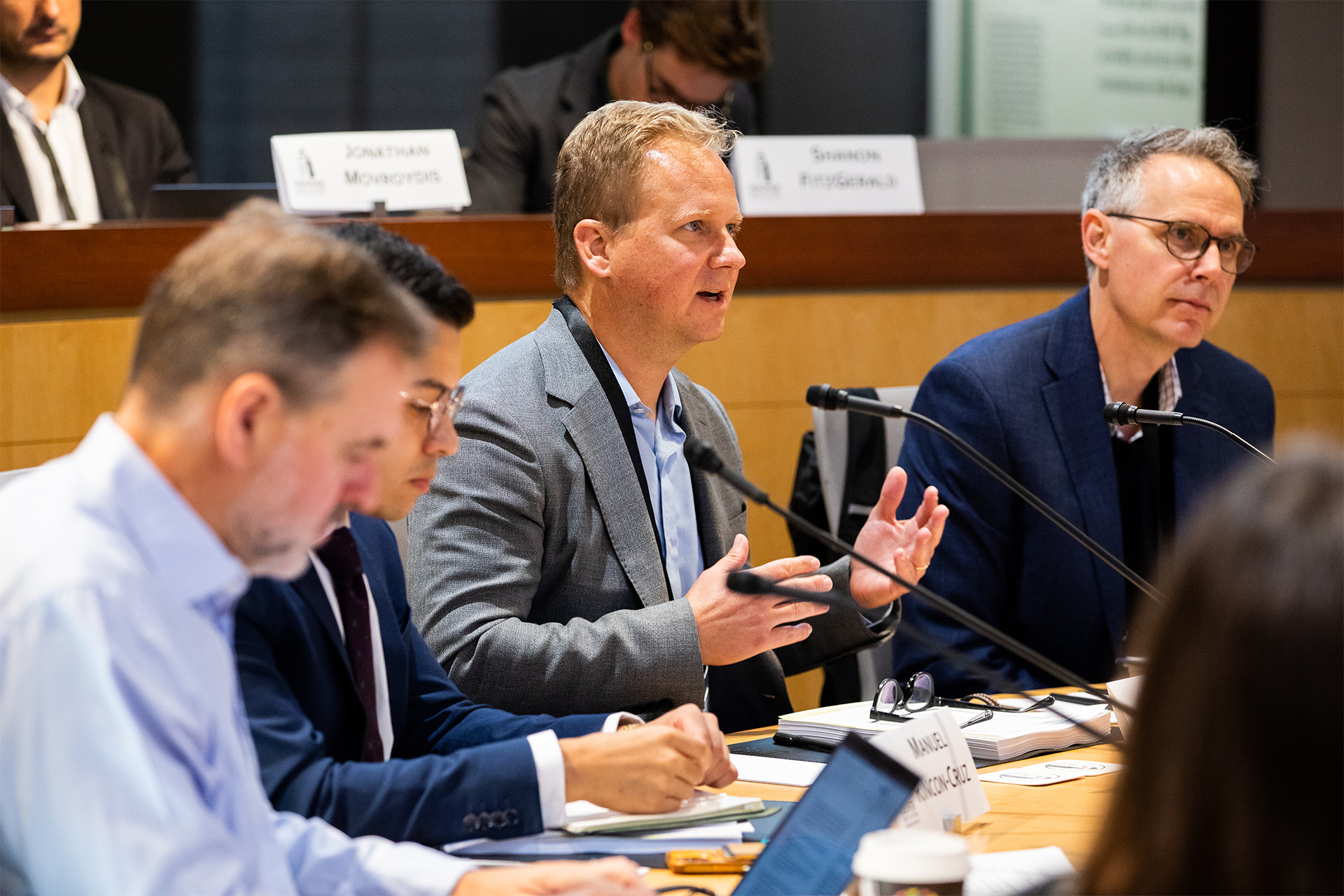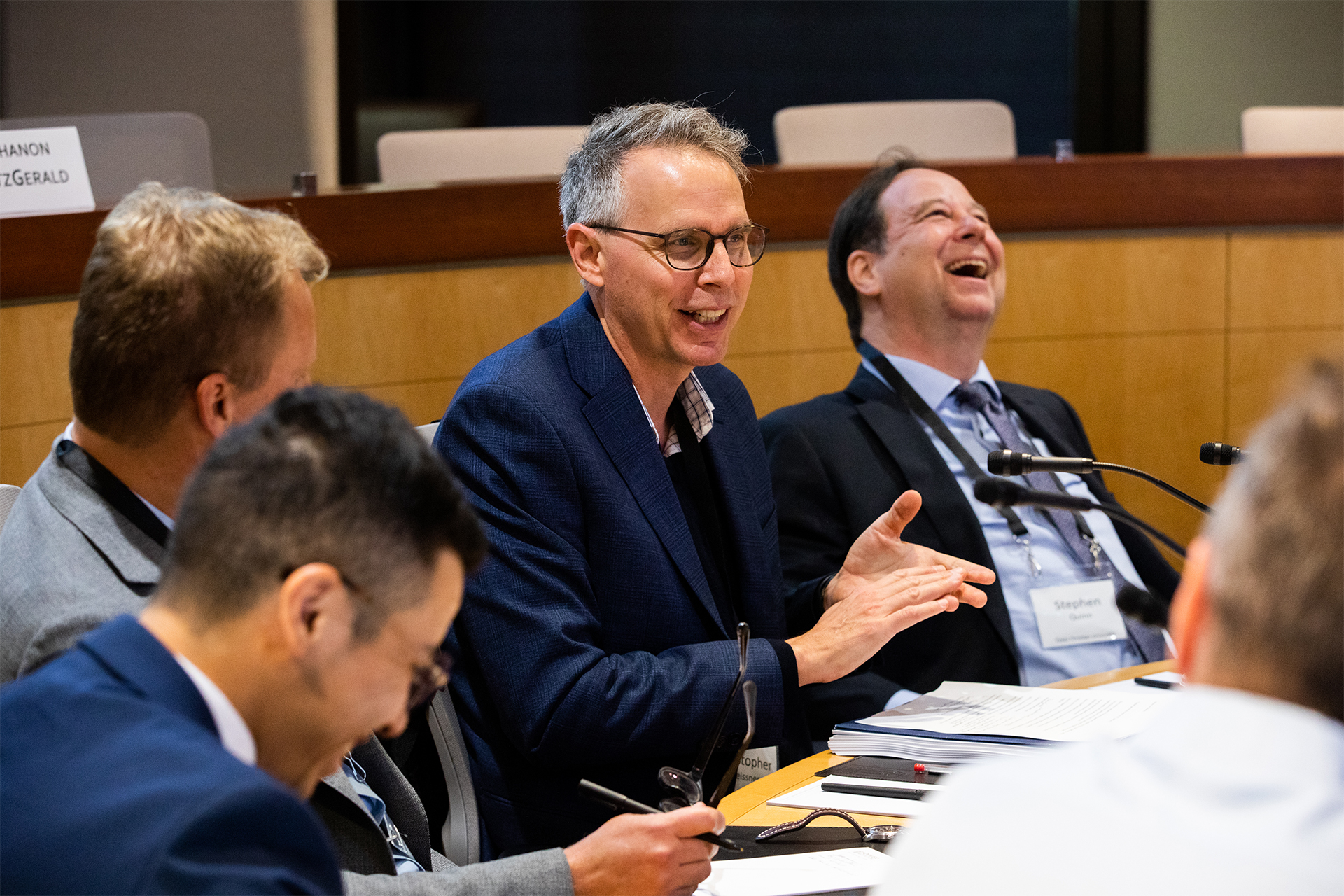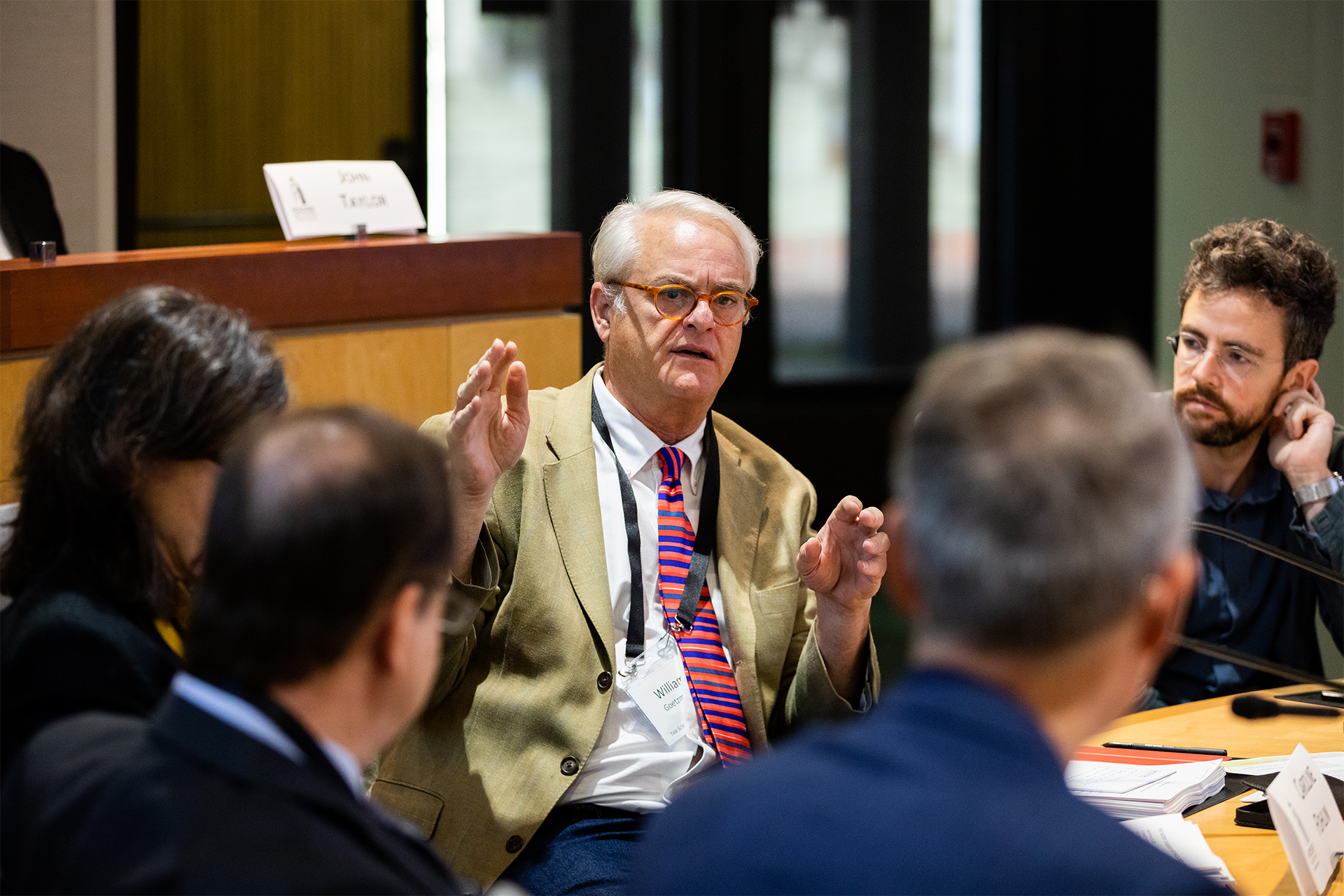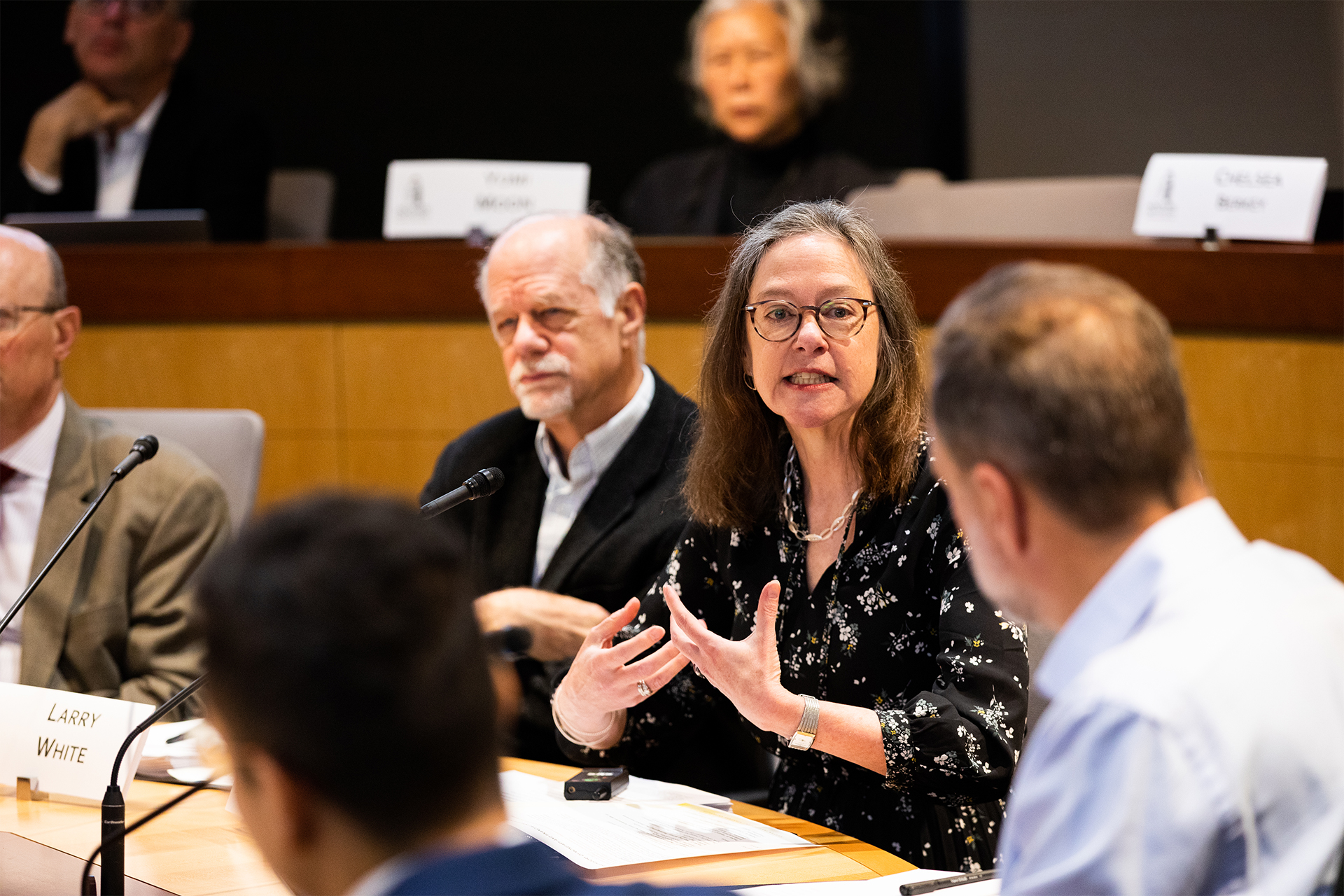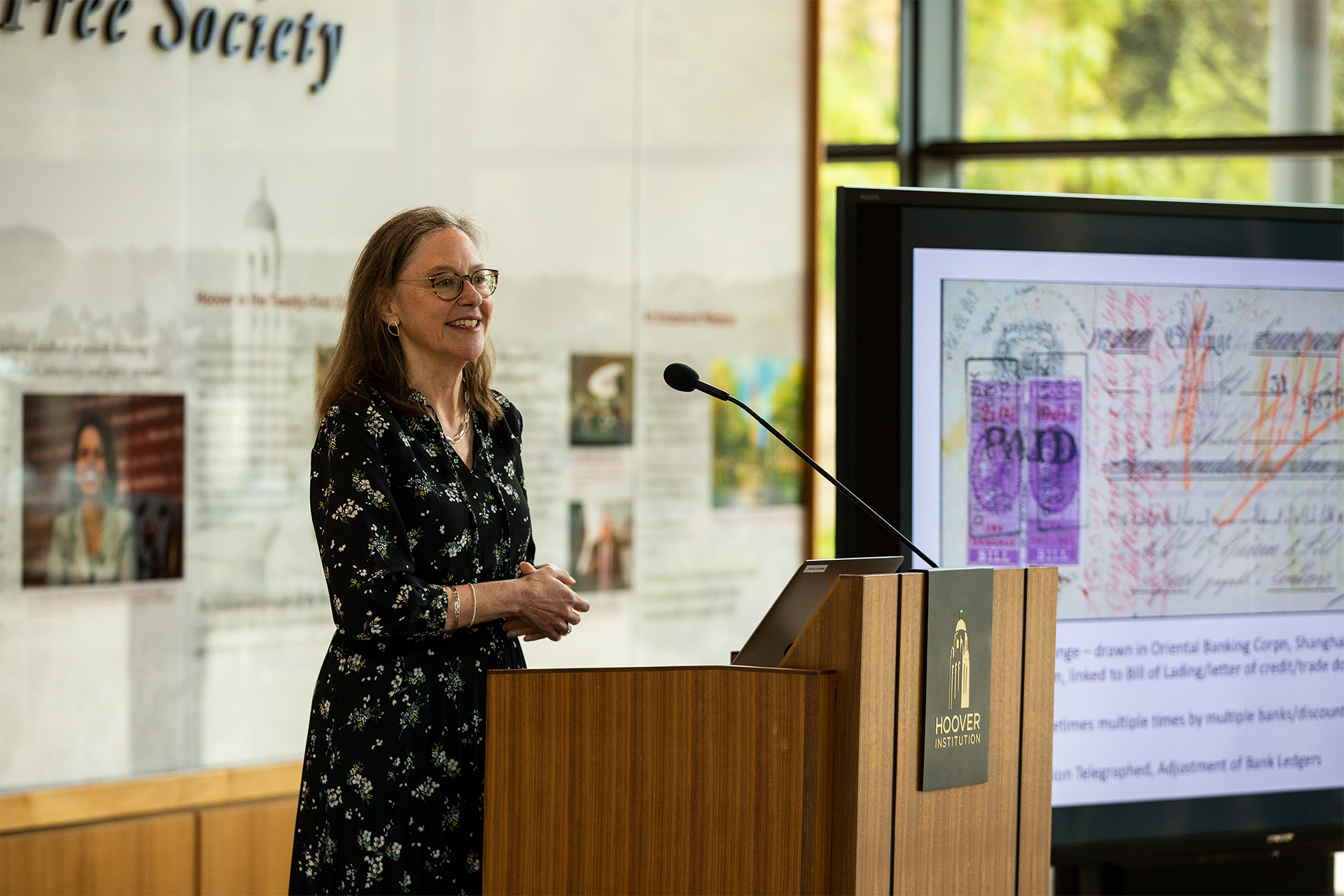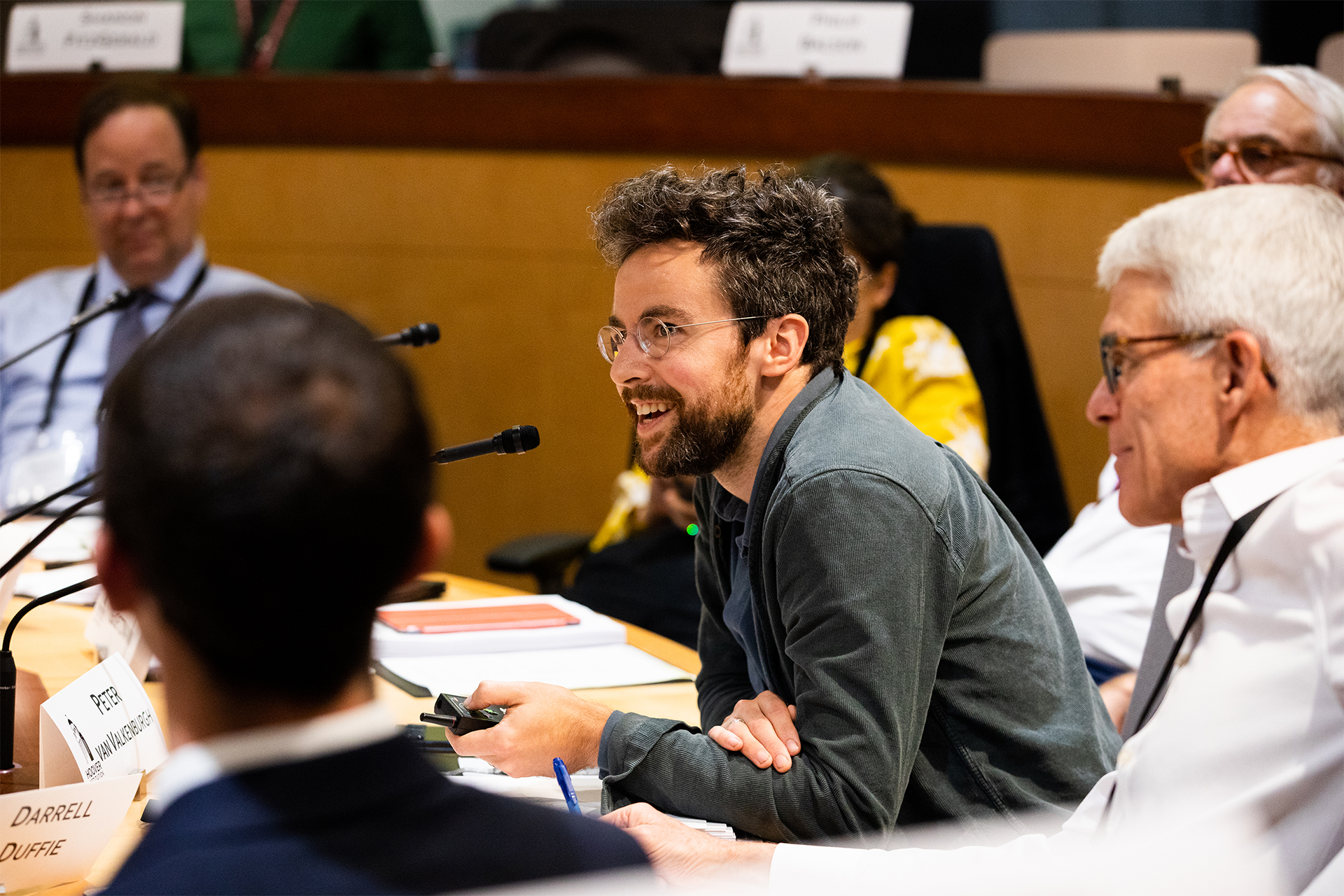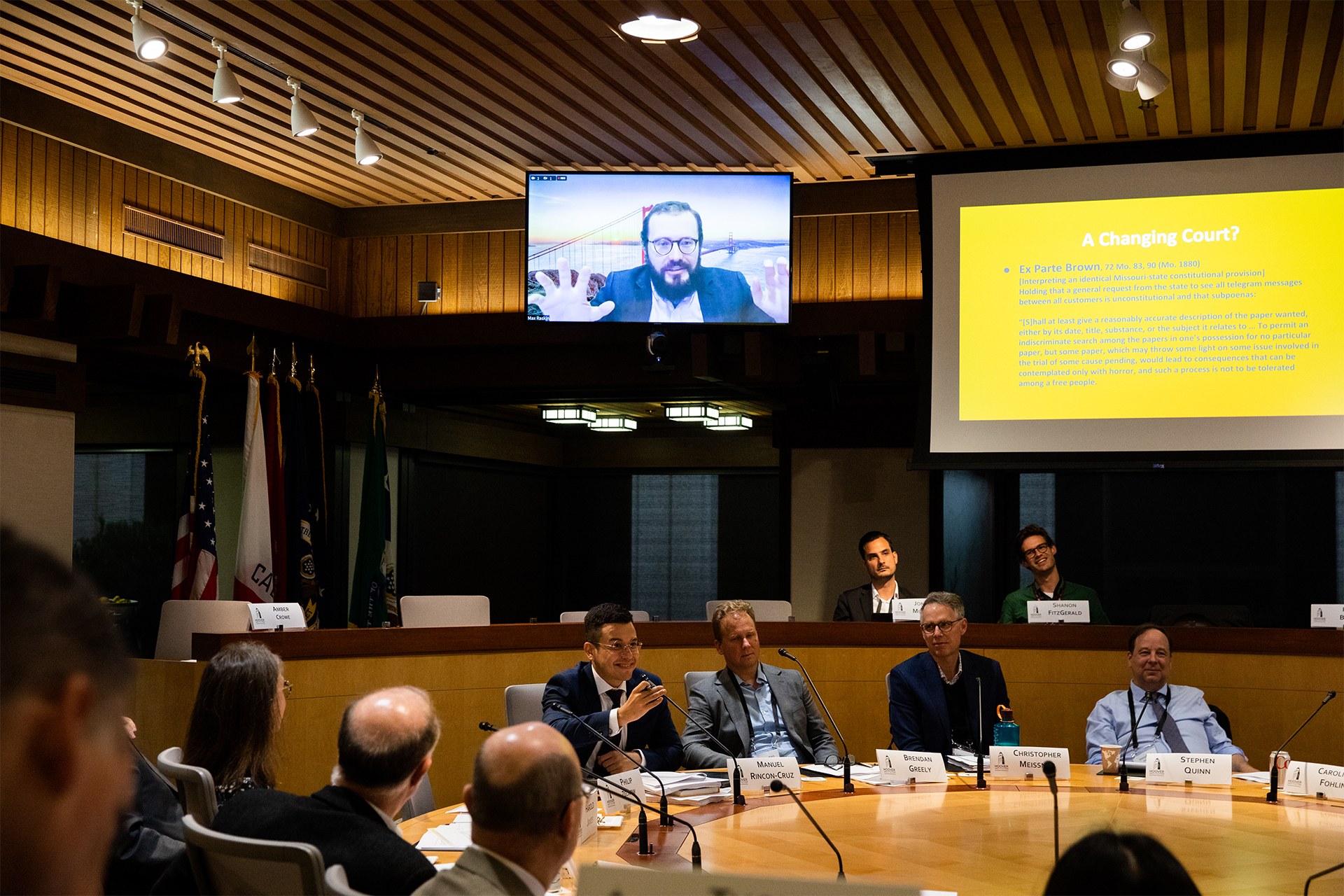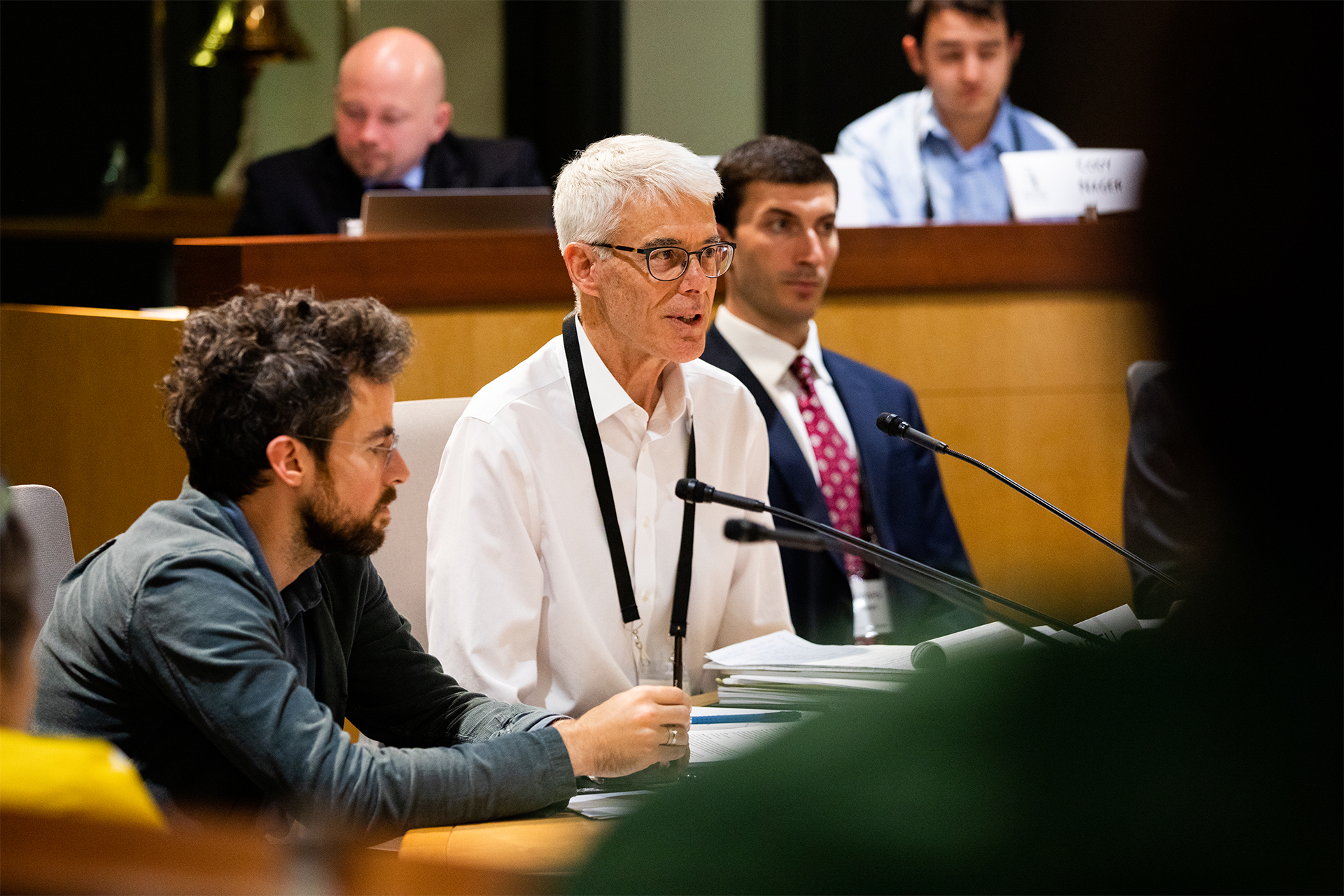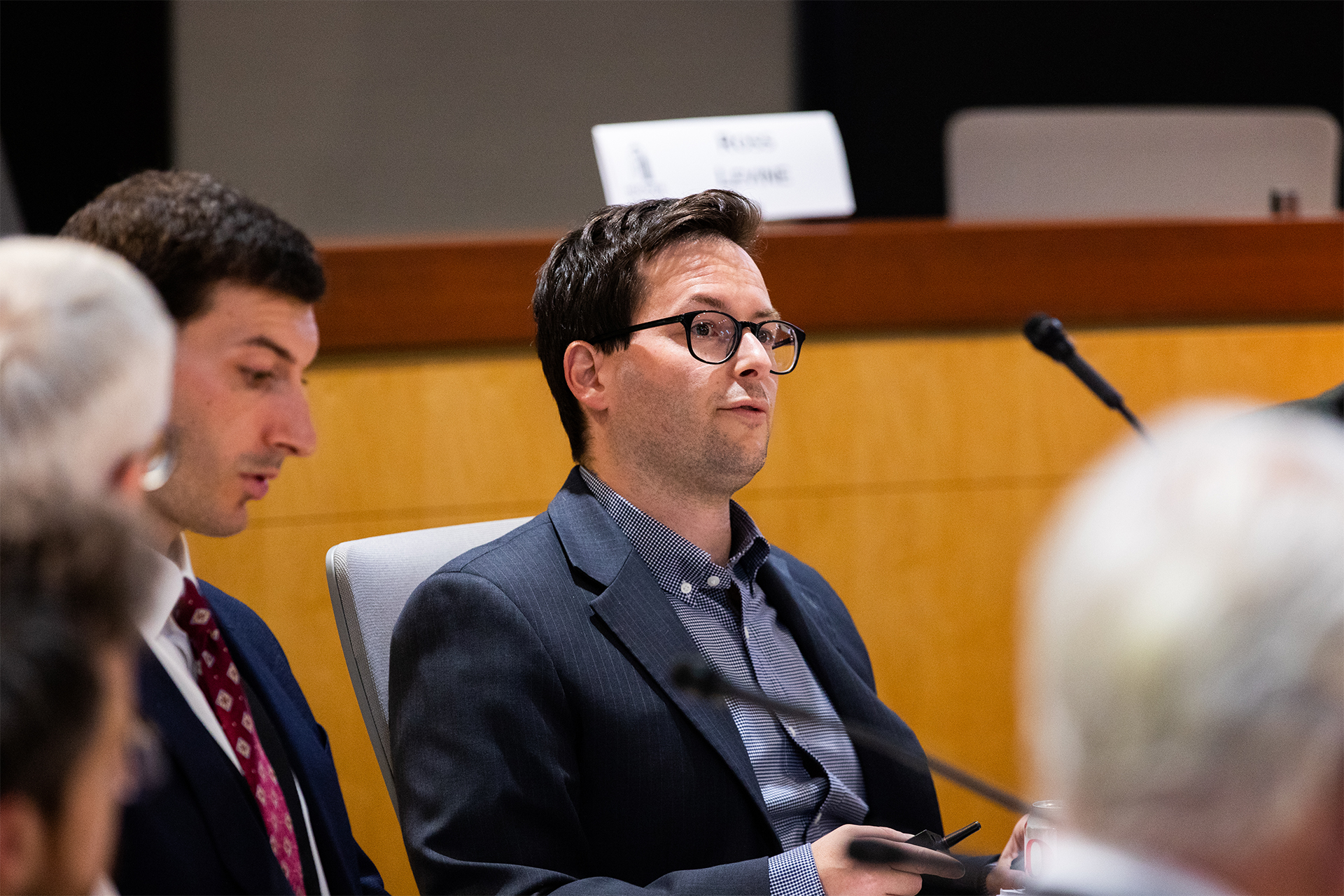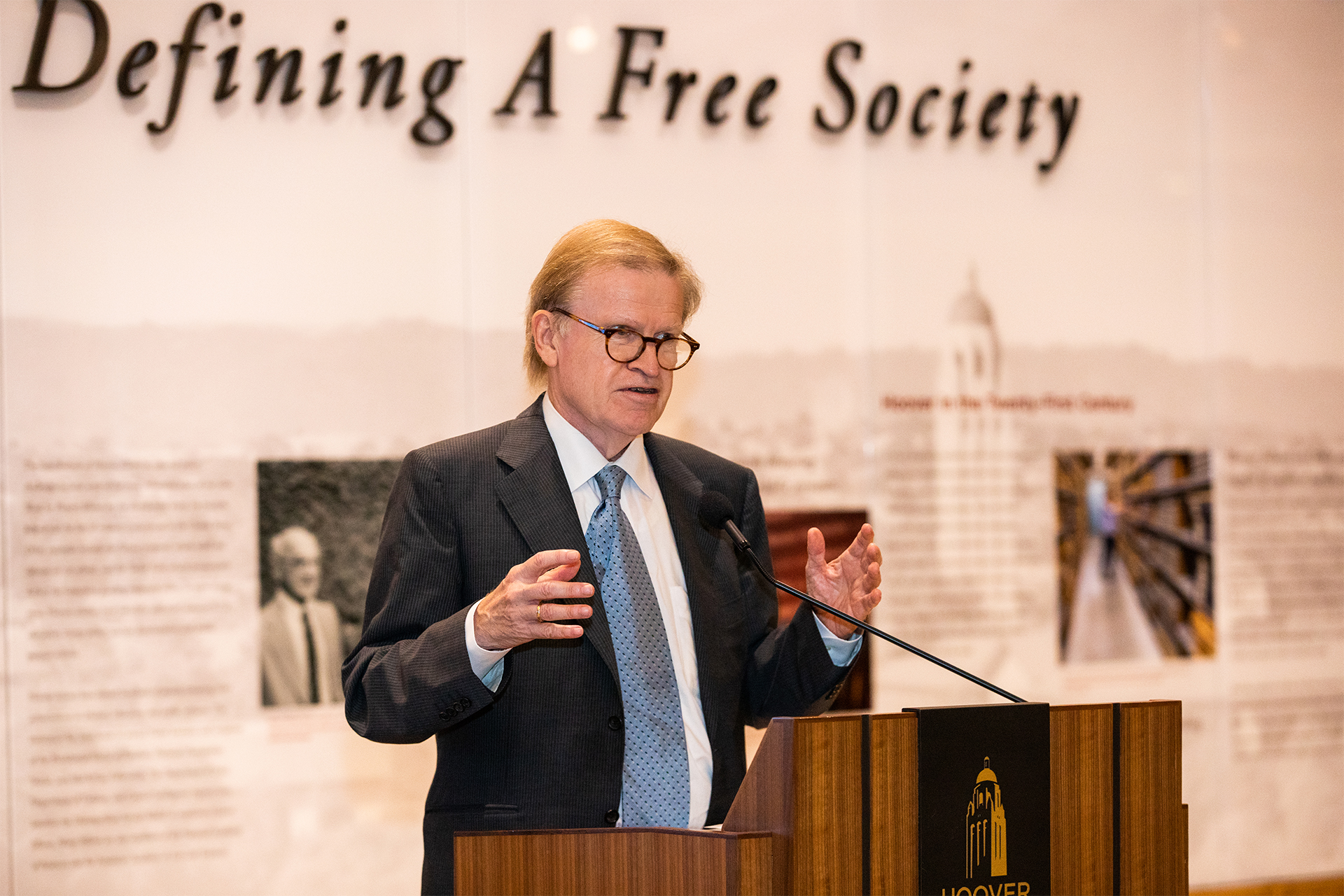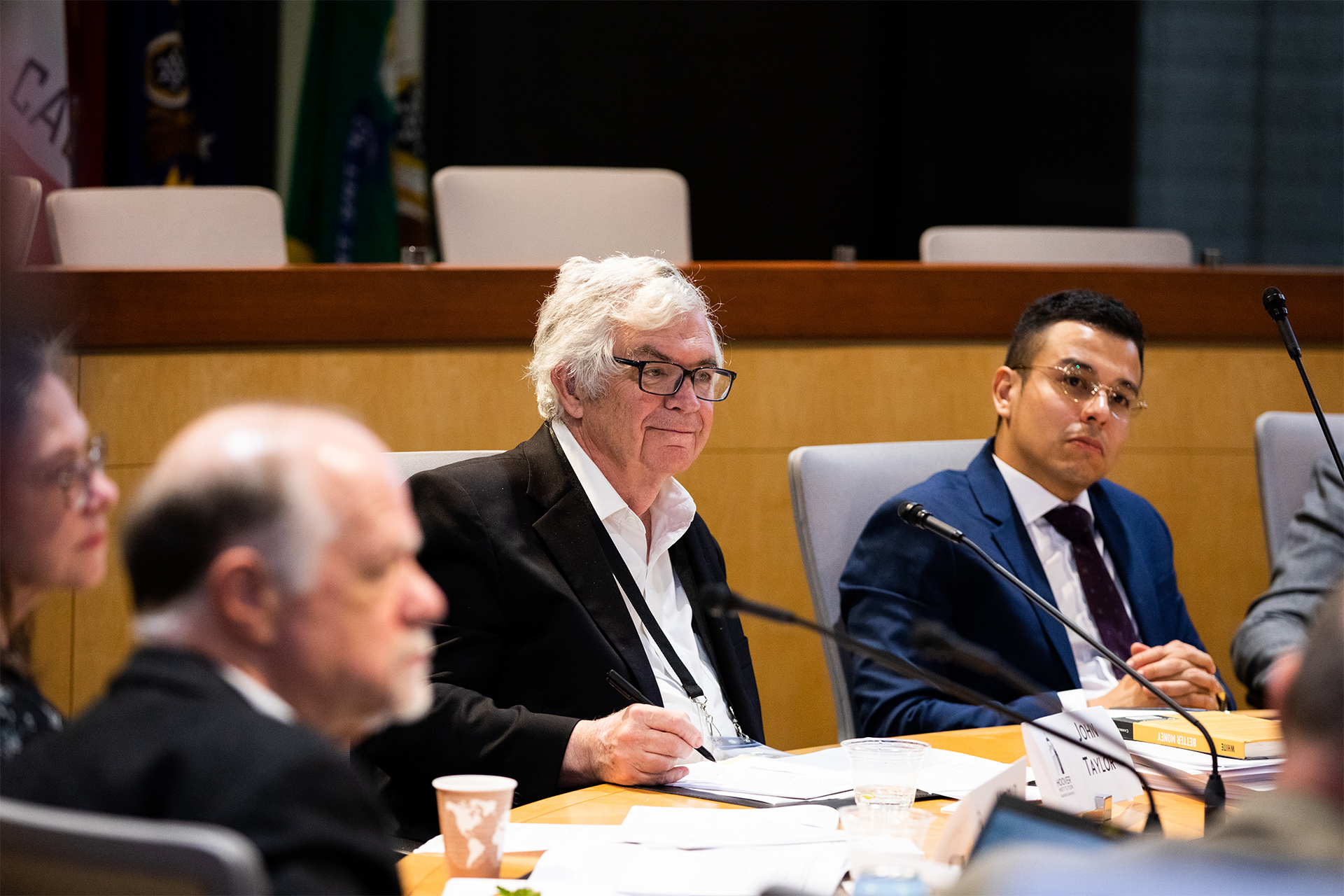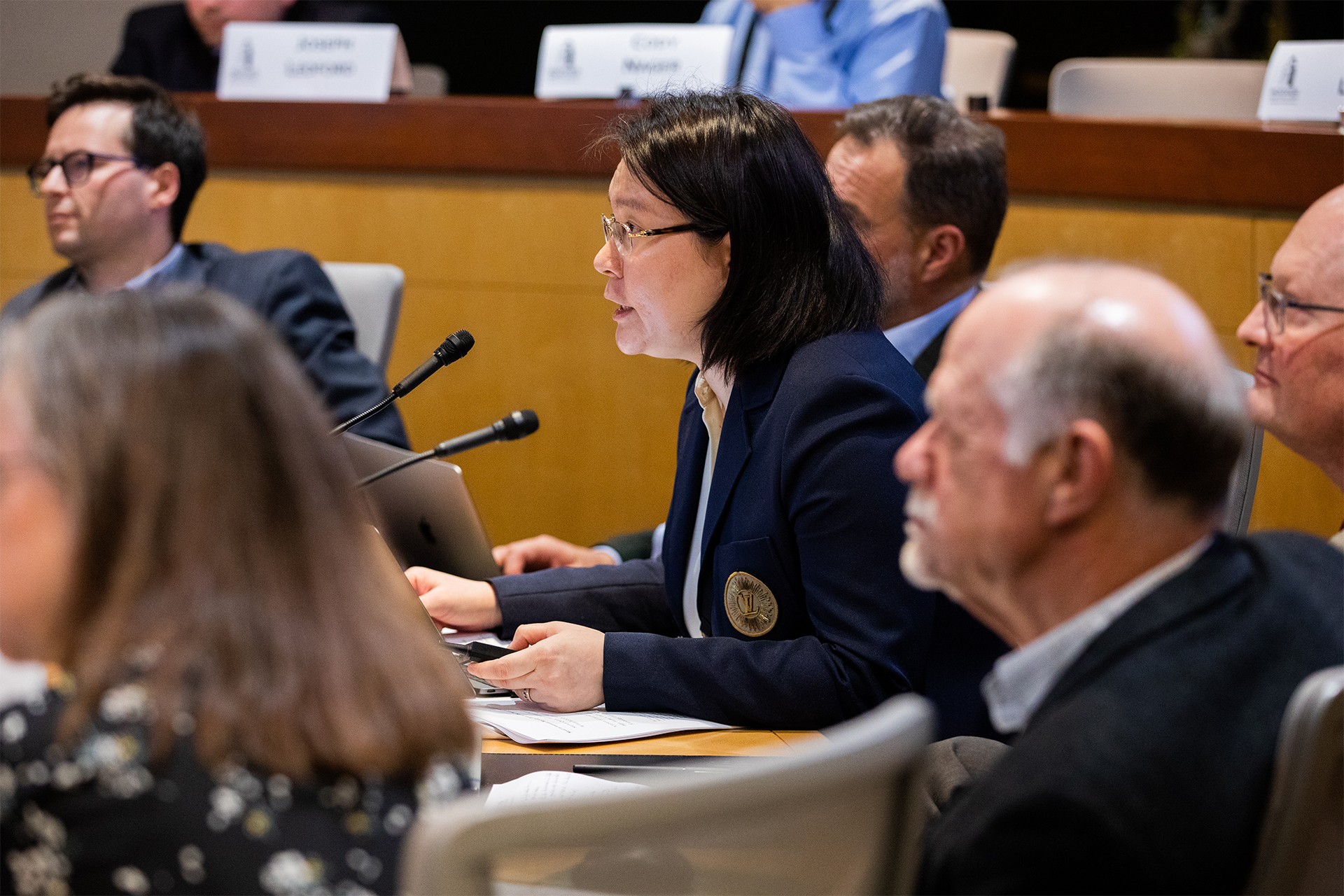Hoover Institution (Stanford, CA) – The Hoover Institution History Working Group, chaired by Milbank Family Senior Fellow Niall Ferguson, hosted its second annual fall History Symposium on September 29, 2023.
The 2023 symposium centered on the theme of monetary and financial innovation patterns.
In his opening remarks, Ferguson pondered why despite the enormous economic progress that has been made in the modern era, there has existed a parallel and growing tendency of governments and central banks, especially in the world’s leading economies, to intervene in the markets and accrue more power for themselves in the process. Referencing his 2008 book, The Ascent of Money: The Financial History of the World, he underscored that the papers that would be presented also provided frameworks in thinking about the history and evolutionary processes of financial systems, including innovations in accounting techniques, credit facilities, corporate and legal structures, and most recently, cryptocurrencies.
The symposium featured keynote remarks by Catherine Schenk, professor of history at Oxford University, on the history of global payments systems from the early twentieth century to today; and Harold James, professor of history at Princeton University, who spoke about how the relationships between governing institutions and private firms have shaped modern financial systems.
The papers presented and discussed were as follows:
“Bottomed and Sunk: Valuing Early Bills of Credit as Financial Contracts”
By Brendan Greely (Princeton University)
In this paper, Brendan Greeley describes how the circulation of currency worked in colonial Maryland. As he explains, the currency wasn’t legal tender whose value was determined because it could be accepted as tax payments or be convertible to gold or silver on demand. Rather, the state of Maryland issued bills of credit that could be valued on their own as financial instruments. This is because the colony held a dedicated “sinking fund,” whereby bills of credit were traded in London for stock in the bank. The logic was that the fund would appreciate over time and could be used to “sink” the bills of credit or buy them back on a set schedule.
“Moving Money: Redesigning the Global Payments System 1969–1999”
By Catherine Schenk (Oxford University)
In this paper, Catherine Schenk describes the evolution in global payments systems from 1969 to 1999. According to Schenk, a combination of financial and technological innovations in the 1960s inspired reforms in the architecture of payment systems culminating in the creation of the Society for Worldwide Interbank Financial Telecommunication (SWIFT) and the Clearing House Interbank Payments System (CHIPS). As these systems were evolving, the collapse of the Herstatt Bank in Germany in 1974 heightened fears of settlement risk. The paper addresses how cross-border payments systems have responded to shocks, globalization, and innovation over the long term, and how the balance between private and public interests have been negotiated.
“Finance Capitalism in Industrializing Autocracies: Evidence from Corporate Balance Sheets in Imperial Germany and Russia”
By Caroline Frohlin (Emory University) and Amanda Gregg (Middlebury College)
This paper compares the regulation of corporations under autocratic regimes in Russia and Germany prior to the nineteenth century. According to the authors, the two countries diverged diametrically in their regulatory approaches. While Russia retained strict controls through a concession system, Germany established a system of nearly free incorporation. The paper argues that authoritarian control of corporate entry in Russia impeded the emergence of finance capitalism in that country, in comparison to the more economically liberalized Germany.
“Convergent Evolution toward the Joint-Stock Company”
By William Goetzmann (Yale University), Sebastien Pouget (Toulouse School of Economics), and David Le Bris (Toulouse Business School)
Contrary to commonly held claims that the joint-stock company originated from maritime trading companies in England and the Netherlands in the early seventeenth century, William Goetzmann, Sebastien Pouget, and David Le Bris argue that there was a convergent evolution—emerging from different places and time periods—in response to a similar set of needs and requirements for coordinating large-scale enterprises. This paper documents the different legal genealogies of the various paths as well as their independence and socioeconomic contexts.
“Electronic Cash, Decentralized Exchange, and the Fourth Amendment”
By Peter van Valkenburgh (Coin Center)
In this paper, Peter van Valkenburgh explains that the emergence of electronic cash and decentralized exchanges challenges expectations that public authorities can regulate and surveil cryptocurrency exchanges under the Bank Secrecy Act. He maintains that confronted by the inability to trace these transactions, policymakers may propose new approaches to financial surveillance, such as regulating software developers and users, that would be unconstitutional under the Fourth Amendment’s prohibition of warrantless search and seizure.
“Classical Liberal Perspectives on Banking and Financial Regulation”
By Lawrence H. White (George Mason University)
Lawrence White traces the history of classical liberal perspectives on the regulation of banking and finance. He explains that although these principles call for allowing competing private suppliers of banking and financial services to freely interact with customers, there are some thinkers within the classical tradition who argue that activity within these sectors proves an exception to the rule in ways that warrant government intervention.
“The Biaoqi System: Settlements Fairs and High Finance in Late Imperial China”
By Matthew Lowenstein (Hoover Institution)
Matthew Lowenstein describes the biaoqi in late imperial China, which were large fairs at which merchants and financiers settled debt obligations, engaged in wholesale commerce, and pursued financing. His central argument is that the biaoqi and similar exchanges constituted the world of high finance in the late Qing dynasty. He shows that the biaoqi fostered liquid markets in credit, exchange, and remittances; that they were intermediated by specialized financial institutions, such as in a formal exchange; and that they relied on institutional lenders (zhangju) who supplied liquidity and clearing services to other financial institutions.
“Metal in Motion: Receipt Flows at the Bank of Amsterdam, 1711 to 1791”
By Stephen Quinn (Texas Christian University) and William Roberds (Federal Reserve Bank of Atlanta)
In their paper, Stephen Quinn and William Roberds reconstruct the volume of metal that flowed from 1711 to 1791 through the Bank of Amsterdam, the nexus of international monetary flows within Europe. According to their research, the data reveals that silver coins had a vigorous throughput that sustained a supply of monetary balances. Meanwhile gold throughput was sporadic, with disruptive flow balances. The paper argues that under the same set of rules, the bank caused divergent outcomes between gold and silver through an unwillingness to adjust either its purchase prices or market conditions. Consequentially, market prices reliably produced incentives to create and redeem silver receipts, while the opposite pertained to gold.


















